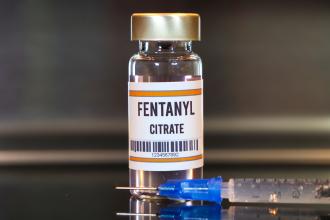Supporting BC youth at risk of drug poisoning from unregulated supply
In 2022, 34 youth under 19 years of age died of illicit drug poisoning in BC.[1] Deaths are a result of increasing toxicity of the unregulated drug supply. For youth using substances, access to harm reduction services and programs can help reduce the risk of injury and fatality. Services and programs must provide a continuum of support, and for some youth, this means rapid access to treatment. Youth across BC face many barriers to accessing harm reduction and overdose prevention services, and the barriers are even greater for Indigenous youth; youth who experience poverty and homelessness; youth living in rural, remote, and isolated communities; youth in and from care; and 2SLGBTQIA+ youth.
Accessing harm reduction and overdose prevention services
Youth under 19 years of age can access harm reduction supplies, naloxone, overdose prevention services, and, in appropriate circumstances, witnessed consumption[2] by a regulated or nonregulated health or social service provider, without a capacity assessment. If youth are denied access to services, this can create a lasting imprint on the relationship between the youth and the health system, delaying access to care and potentially leading to other negative health outcomes, including death.
Duty to report: Caution needed
According to Section 14 of the Child, Family and Community Service Act,[3] if a provider believes a youth under 19 years of age is in need of protection, there is a legal duty to report their concerns to the Ministry of Children and Family Development (MCFD) or Indigenous Child and Family Service Agencies (ICFSA). However, reporting to authorities such as the police or the MCFD/ICFSA should be considered carefully and done with caution. A youth has a reasonable expectation of privacy and confidentiality when accessing health services. Making a premature or inappropriate report could damage a therapeutic relationship developed with the youth and impact future decisions about accessing care.
There is no duty to report youth merely for using substances or accessing harm reduction supplies, drug checking services, or naloxone. Youth are taking care of themselves by accessing harm reduction services.
If there are additional concerns for a youth, including lack of food, shelter, clothing, or medical care, discuss with the youth about making a report or requesting support services from the MCFD/ICFSA. If available, connect with a youth outreach team or other supportive people identified by the youth.
Youth accessing prescribed safer supply
In BC, there is no set age at which an individual is considered a mature minor, which means there is no set age at which youth may access safer supply medications from a regulated health care provider following a capacity assessment. To assess capacity, a clinician must explain to the youth the nature and consequences of the proposed health care intervention, as well as the reasonably foreseeable benefits and risks. The clinician should be satisfied that the youth understands and is able to apply the information to their own situation.
If the clinician has made reasonable efforts to determine, and has concluded, that prescribed safer supply is in a mature minor’s best interests, then the clinician should administer care if appropriate consent has been given. Consent from the youth’s parent or legal guardian is not required.
When determining if prescribed safer supply is in a mature minor’s best interests, clinicians should consider the potentially fatal consequences of not providing care. Youth report barriers to accessing prescribed safer supply and a preference among clinicians to prescribe opioid agonist therapy instead of or in combination with prescribed safer supply medications. Opioid agonist therapy may not meet the needs of the youth, and youth may continue to access unregulated supply, remaining at risk of preventable overdose.
Learn about services, and offer choice and meaningful supports
It is recommended that providers familiarize themselves with the full spectrum of services available in their communities, including treatment, harm reduction, community services, and Indigenous cultural supports. Actual or suspected coercion by health and social service providers toward abstinence-based treatment can erode youths’ trust in health care and prevent them from accessing further services. Offering choice is a principle of trauma-informed practice that engages youth in health care decision-making and can improve adherence to patient-identified goals.
—Kali Sedgemore
Member, Professionals for Ethical Engagement of Peers
—Alexis Crabtree, MD, MPH, PhD, CCFP, FRCPC
Public Health Physician, Harm Reduction and Substance Use Services, BCCDC
—Blake Stitilis, MPH
Project Manager, Harm Reduction and Substance Use Services, BCCDC
Resources
- Ministry of Mental Health and Addictions: Pathways to mental health and substance use supports (https://wellbeing.gov.bc.ca).
- BCCDC Harm Reduction Services: Harm reduction site finder (https://towardtheheart.com/site-finder).
- First Nations Health Authority: Mental health and substance use (www.fnha.ca/what-we-do/mental-wellness-and-substance-use).
hidden
This article is the opinion of the BC Centre for Disease Control and has not been peer reviewed by the BCMJ Editorial Board.
 |
| This work is licensed under a Creative Commons Attribution-NonCommercial-NoDerivatives 4.0 International License. |
References
1. BC Coroners Service. Illicit drug toxicity deaths in BC January 1, 2012 – December 31, 2022. Accessed 16 February 2023. www2.gov.bc.ca/assets/gov/birth-adoption-death-marriage-and-divorce/deaths/coroners-service/statistical/illicit-drug.pdf.
2. BC Ministry of Health. COVID-19: Provincial episodic overdose prevention service (e-OPS) protocol. Updated 26 June 2020. Accessed 8 March 2023. www.bccdc.ca/Health-Professionals-Site/Documents/COVID19_EpisodicOPSProtocolGuidelines.pdf.
3. Child, Family and Community Service Act [RSBC 1996] Chapter 46. Accessed 16 February 2023. www.bclaws.gov.bc.ca/civix/document/id/complete/statreg/96046_01.

